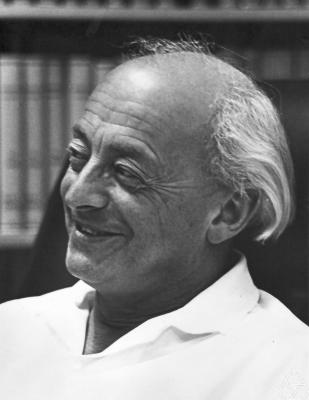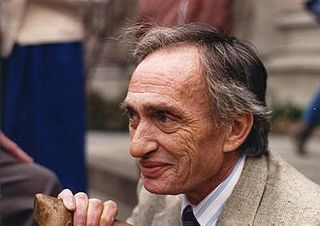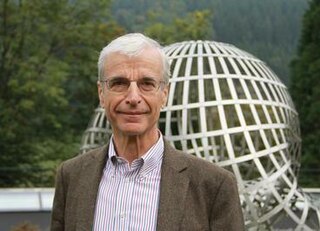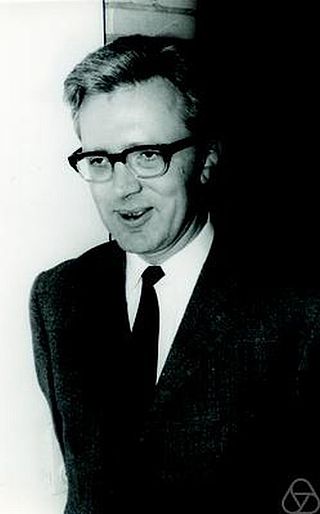
Derek John Scott Robinson (born 25 September 1938 in Montrose, Scotland) [1] is a British mathematician, specialising in group theory and homological algebra. [2]

Derek John Scott Robinson (born 25 September 1938 in Montrose, Scotland) [1] is a British mathematician, specialising in group theory and homological algebra. [2]
Robinson graduated in 1960 with a bachelor's degree from the University of Edinburgh and in 1963 with a Ph.D. from the University of Cambridge. [2] His Ph.D. thesis Theory of Subnormal Subgroups was supervised by Philip Hall. [3] As a postdoc, Robinson was from 1963 to 1965 an instructor at the University of Illinois Urbana-Champaign. From 1965 to 1968 he was a lecturer at Queen Mary College (now named Queen Mary University of London). At the University of Illinois Urbana-Champaign he was an assistant professor from 1968 to 1969, an associate professor from 1969 to 1974, and a full professor from 1974 to 2007, when he retired as professor emeritus. He held visiting appointments in Switzerland, Italy, Germany, and Singapore. [2]
Robinson's 1964 paper on T-groups [4] has over 250 citations. He was awarded in 1970 the Sir Edmund Whittaker Memorial Prize and received in 1979 a Humboldt Prize. [2]

Algebraic topology is a branch of mathematics that uses tools from abstract algebra to study topological spaces. The basic goal is to find algebraic invariants that classify topological spaces up to homeomorphism, though usually most classify up to homotopy equivalence.

Oscar Zariski was a Russian-born American mathematician and one of the most influential algebraic geometers of the 20th century.

Richard Dagobert Brauer was a leading German and American mathematician. He worked mainly in abstract algebra, but made important contributions to number theory. He was the founder of modular representation theory.

Reinhold Baer was a German mathematician, known for his work in algebra. He introduced injective modules in 1940. He is the eponym of Baer rings and Baer groups.
Michio Suzuki was a Japanese mathematician who studied group theory.

In mathematics, the lattice of subgroups of a group is the lattice whose elements are the subgroups of , with the partial ordering being set inclusion. In this lattice, the join of two subgroups is the subgroup generated by their union, and the meet of two subgroups is their intersection.
In mathematics, in the field of group theory, a locally finite group is a type of group that can be studied in ways analogous to a finite group. Sylow subgroups, Carter subgroups, and abelian subgroups of locally finite groups have been studied. The concept is credited to work in the 1930s by Russian mathematician Sergei Chernikov.

Israel Nathan Herstein was a mathematician, appointed as professor at the University of Chicago in 1951. He worked on a variety of areas of algebra, including ring theory, with over 100 research papers and over a dozen books.

In mathematics, specifically in abstract algebra, a torsion-free abelian group is an abelian group which has no non-trivial torsion elements; that is, a group in which the group operation is commutative and the identity element is the only element with finite order.

Algebraic combinatorics is an area of mathematics that employs methods of abstract algebra, notably group theory and representation theory, in various combinatorial contexts and, conversely, applies combinatorial techniques to problems in algebra.

George Abram Miller was an early group theorist.

Bertram Huppert is a German mathematician specializing in group theory and the representation theory of finite groups. His Endliche Gruppen is an influential textbook in group theory, and he has over 50 doctoral descendants.

Harald G. Niederreiter is an Austrian mathematician known for his work in discrepancy theory, algebraic geometry, quasi-Monte Carlo methods, and cryptography.
Sheldon H. Katz is an American mathematician, specializing in algebraic geometry and its applications to string theory.
Joseph J. Rotman was a Professor of Mathematics at the University of Illinois at Urbana–Champaign and also a published author of 10 textbooks.
Lois Wilfred Griffiths was an American mathematician and teacher. She served as a researcher, mathematician, and professor for 37 years at Northwestern University before retiring in 1964. She is best known for her work in polygonal numbers. She published multiple papers and wrote a textbook, Introduction to the Theory of Equations, published in 1945.

Heinz Peter Dembowski was a German mathematician, specializing in combinatorics. He is known for the Dembowski-Wagner theorem and for Dembowski-Ostrom polynomials.
Donald Steven Passman is an American mathematician, specializing in ring theory, group theory, and Lie algebra theory.
Introduction to Lattices and Order is a mathematical textbook on order theory by Brian A. Davey and Hilary Priestley. It was published by the Cambridge University Press in their Cambridge Mathematical Textbooks series in 1990, with a second edition in 2002. The second edition is significantly different in its topics and organization, and was revised to incorporate recent developments in the area, especially in its applications to computer science. The Basic Library List Committee of the Mathematical Association of America has suggested its inclusion in undergraduate mathematics libraries.